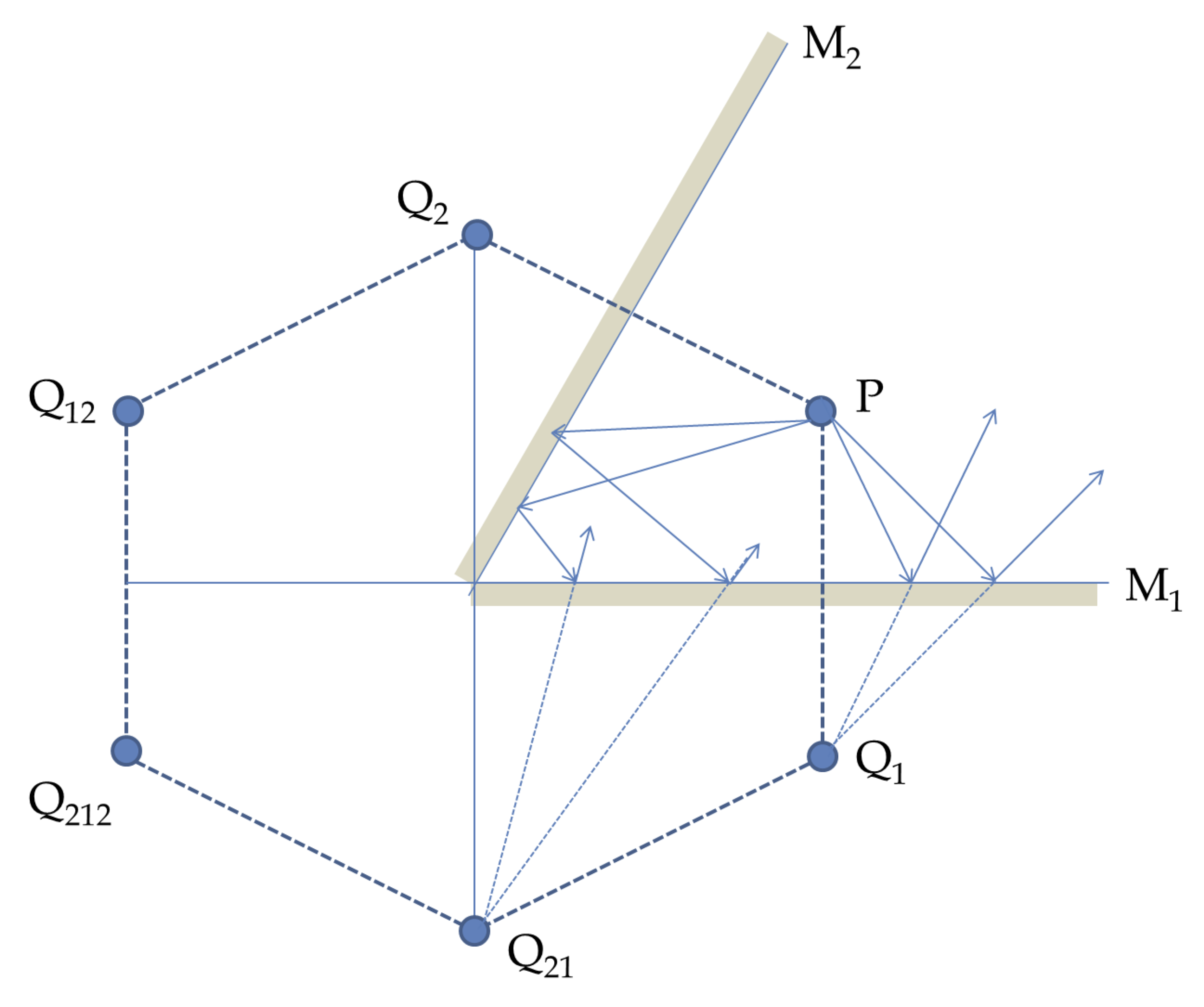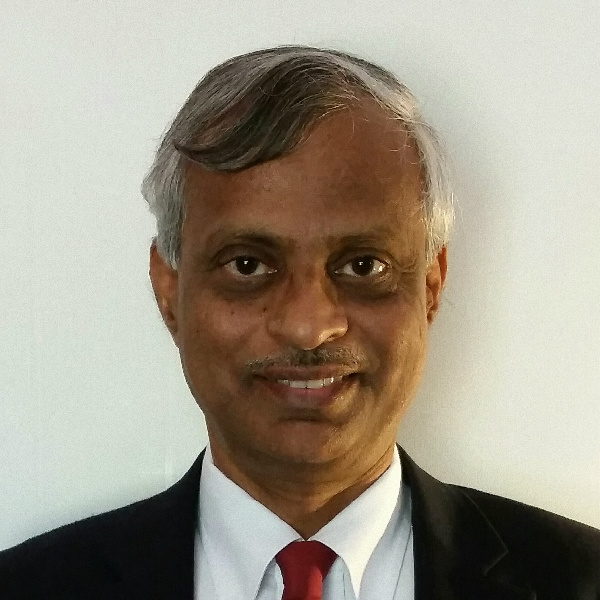1. Images by Two Mirrors with an Acute Angle Between Them.
Two mirrors are inclined at an angle of \(60^{\circ}\) and an object is placed at a point that is equidistant from the two mirrors. Use a protractor to draw rays accurately and locate all images. You may have to draw several figures so that that rays for different images do not clutter your drawing.
Hint.
Draw rays to locate five images. They will be at the corners of a regular hexagon.
Answer.
See the solution.
Solution.
We can think of each mirror being infinitely long and look for image of image from one mirror into the other. Since angle is \(60^{\circ}\text{,}\) they start to overlap and end with only five images as shown in Figure 44.8.
The images are labeled with subscript that indicate the reflections from the two mirrors. The rays leading to two of the images are shown in the figure and the student is encouraged to work out representative rays that lead to other images.











